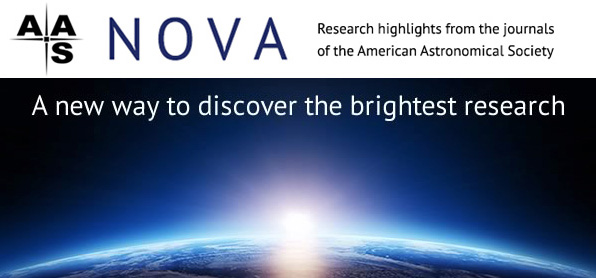Highlights from AAS Nova: 1 - 14 October 2017

Susanna Kohler American Astronomical Society (AAS)
AAS Nova provides brief highlights of recently published articles from the AAS journals, i.e., The Astronomical Journal (AJ) and The Astrophysical Journal (ApJ), ApJ Letters, and ApJ Supplements. The website's intent is to gain broader exposure for AAS authors and to provide astronomy researchers and enthusiasts with summaries of recent, interesting research across a wide range of astronomical fields.
The following are the AAS Nova highlights from the past two weeks; follow the links to read more, or visit the AAS Nova webpage for more posts.
13 October 2017
WorldWide Telescope Hits the Web
Astronomers, have you missed out on WorldWide Telescope (WWT) because you’re not on a Windows computer? Good news: WWT can now be accessed via a web interface.
11 October 2017
Exploring Our Low-Mass Neighbors
Taking advantage of a program offered by the National Radio Astronomy Observatory, an undergraduate class has observed local dwarf galaxies to learn about their properties.
10 October 2017
Biography of a Galaxy: Uncovering Star Formation Histories
Astrobites reports on the story of star formation in different galaxies.
9 October 2017
The Prospect of Neutrinos with Gravitational Waves
Will we be able to combine observations of neutrinos and gravitational waves in the future to provide a deeper picture of astrophysical events?
6 October 2017
Why Are Hot Jupiters So Lonely?
Jupiter-like planets with blisteringly close-in orbits are generally friendless, with no nearby planets transiting along with them. A new study explains why.
4 October 2017
Making and Breaking Clouds
Molecular clouds — which you’re likely familiar with from stunning popular astronomy imagery — lead complicated, tumultuous lives.
3 October 2017
40 Eridani B: A Challenging Star
Astrobites reports on how new observations have finally solved many mysteries associated with the white dwarf 40 Eridani B.
2 October 2017
Featured Image: Making a Rapidly Rotating Black Hole
Failed supernovae may be the key to producing rapidly spinning black holes in binaries.


